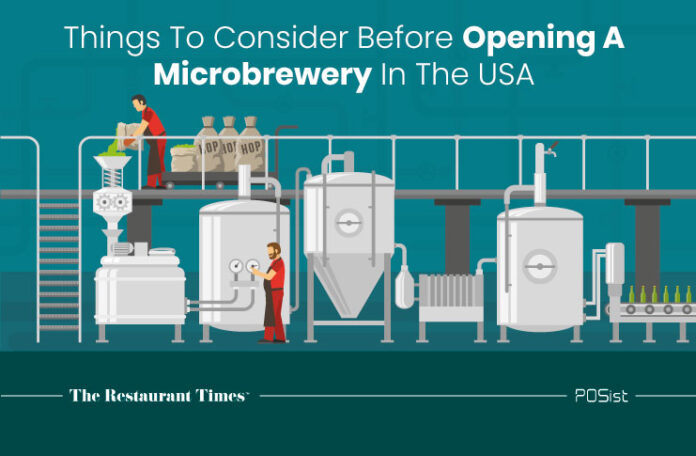Brewery tourism is on the upswing, from beer-centric destinations like Portland, Seattle, Denver, and Asheville to locations like Chicago, New York, and San Diego, where beer is simply another excellent reason to visit. It’s easy to see why there are hundreds of brewers and brewpubs sprinkled around the United States. Craft brewers accounted for 22% of the American beer industry’s sales in 2020, or $22.2 billion out of a $116 billion market, according to the Brewers Association. Brewery and microbrewery business, like any other business, have long-term survival challenges, especially because the craft beer industry has gotten so saturated in the last 20 years.
Breweries include a wide range of brewing activities, from typical craft beer microbreweries to cideries, distilleries, and wineries. In other words, there’s a brewery for every taste and budget. As the popularity and demand for beer grow, so does the interest in new breweries. If you’re thinking about starting your brewery, this is the correct time to venture into the business and make a profit.
What Is A Microbrewery?
A microbrewery is a business that evolves in tandem with its surrounding community. This is mainly because brewers begin by selling to local stores, which subsequently sell to end customers through tiny distributors. Places like restaurant and beer store growth regions, as well as communities near colleges and universities, are good markets for this business. This is because the average microbrew consumer is more educated than the average beer drinker, and these areas also have Millennial populations that choose “experiences” over traditional products.
Things To Know Before Starting A Microbrewery Business In The US
Here are six essential things to do before you start a microbrewery business in the United States.
1. Business Plan
Starting a business can be a lengthy process that necessitates a significant amount of time and money. Opening a brewery can be risky but if you are determined enough, it is quite simple. Finding the correct mix between having a strong strategy in place before you start and leaving yourself enough flexibility to adjust or pivot the plan as you go along is key to figuring out how to start a brewery successfully. Choose a name that speaks to your business’s brand identity and values. Protect your intellectual property with a trademark once you’ve decided on a name for your brewery or beer.
You’ll be submitting your name to the US Patent and Trademark Office for consideration through this method. Your geographic location is crucial to your success. It establishes the tone of the company and determines whether your brewery is a destination worth travelling to or a neighbourhood hangout for locals. The corporate structure also specifies who owns what, who is responsible for what, and what rights each owner has if your company has several stakeholders. Consult a business attorney to select the best company entity for your needs.

2. Cost
The cost of launching a microbrewery, on the other hand, varies depending on the size of the brewery, output levels, and location. Microbreweries have substantial startup expenses compared to many other small enterprises. Dealing with unexpected fees and charges is one of the most difficult aspects of starting a brewery. Major expenses include licenses, rent and startup inventory. In comparison, brewery equipment such as kettles, boilers, kegs, cooling systems, storage tanks, fermentation tanks, and filters only cost around $100,000.
Throughout the startup phase, your spending will not be high as a microbrewery typically requires less equipment and space. You can produce 20 barrels per year and still have a good profit margin. Many of the operational expenditures of this business are changeable, depending on the area, the size of the company, and market fluctuations. The key expenditures will include paying for brewing ingredients (such as malt, yeast, and hops), utilities (such as power, gas, and sewage), and ongoing cleaning and repair charges, which will include frequently acquiring cleaning equipment.
When it comes to distribution, a microbrewery usually uses a three-tier structure. The brewer utilizes a distributor to sell alcohol to local pubs, grocery shops, liquor stores, and other businesses under a three-tier structure. Customers are subsequently sold to by these customer-facing companies. Microbrews are available year-round, and many brewers develop special seasonal offers.
3. Licenses and Permits
A liquor license is required to lawfully own and run a brewery or any other company that manufactures or sells alcohol. Because of the direct link between alcohol production and sales, you can expect to be subject to a slew of state rules and legislation. The alcohol sector is extensively regulated at both the federal and state levels, with state regulations having a lot of influence over how you may conduct your brewery.
You can apply for a limited license, which permits you to sell particular types or amounts of alcohol, or a complete license, depending on your manufacturing and serving needs. Make sure to look into the unique criteria for your brewery’s location. Although each state has its unique set of rules for starting and running a brewery, there are certain essential duties and legal documentation that you’ll need to get.
4. Location
When you want to attract more and more customers to your microbrewery, your location plays an important role. The area must be large enough for your brewing operation and equipped to manage the special needs of alcoholic beverage production. You can consider neighbourhood footfall, traffic access, and parking if you also operate a bar or brewpub. You’ll also need room to store beverages, run the company, and entertain artists, among other things.
If you pick a structure that does not meet your demands, you will not be able to manage a profitable brewery. The most critical consideration, like with any company, is safety. Make sure the structure you pick will pass safety inspections and allow you to do business safely.
5. Distributors
When you are producing alcohol, you will need to expand your distribution network to sell your product more and more. Since the lifting of prohibition, the United States has commissioned a three-tiered structure for alcohol distribution. The producers, distributors, and retailers are the three levels. You sell your beer to wholesale merchants, who then sell it to retailers, who in turn sell it to end-consumers.
Brewpubs are an anomaly, as they produce their beer and sell it directly to customers. Consider the distribution firm you wish to work with and the terms of your deal. Most states have rules protecting the provider-distributor sales contract, think about your present and future needs before signing one. Your local brewing guild or association should be able to assist you in finding the appropriate distributor for your needs and brand.
6. Marketing
Marketing is crucial to any business as it’s the part where you invite customers to try out your product. Market research relates to deciding which areas could be your potential targets. It forms the foundation of an effective market strategy. Design a website that can be a digital storefront for your customers to visit and know about your microbrewery. Invest in digital ads as per the current trends, it works the best.
Social media is another way you can reach as many people as you want to. Organize launch parties that can also attract potential distributors or retailers that want to work with you. If you’re selling to retail stores, you should additionally concentrate on local marketing and branding. In addition, depending on where you are located, you can also participate in a beer festival. These kinds of events allow a variety of brewers to promote their wares to a big audience, and they frequently include music, entertainment, and food.
Although starting a brewery might be difficult and expensive, the rewards can be enormous. Beer has high-profit margins, and with solid financial management, you can transform a competent brewery into a flourishing enterprise.
You’re well on your way to making your idea a reality now that you know the basics of how to establish a brewery. There are several online resources and tools accessible to you, as well as many industry associations willing to share their knowledge and experiences. Starting your brewery may be both thrilling and intimidating at the same time, especially if you’re new to the craft beer market. However, you have the basis for long-term growth if you have well-thought-out and documented strategies, procedures, and reporting in place.

















